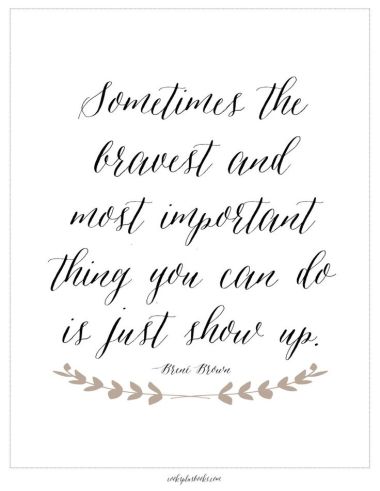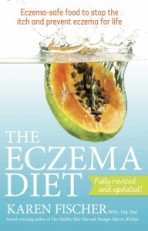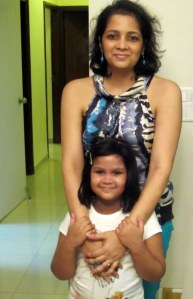I am really sorry for not having written anything for a really long time now. I have been busy with my Functional Medicine Health Coaching Course (from the US based Functional Medicine Coaching Academy) and my Dietetics and Nutrition course. The Health Coaching course has been an immensely enjoyable and fulfilling experience and I become a Certified Health Coach next month! I will write more on that next time. This post is about something else.
I have written quite a while back on a comparison between 2 immunosuppressive medications that my daughter has been on earlier on. In this post, I want to write about one more immunosuppressive medication that my daughter has been on since the past couple of years and it is called methotrexate.
Before I go any further though, I would like to out some things in perspective. Since these medications are very powerful and potent drugs, these medications are the last line of treatment for Atopic Dermatitis. They do not “cure” eczema, they are given to manage severe eczema which are not being managed by other lines of treatment. These are usually given for many months or years depending upon the patient’s condition. These medications are not given to any patient, child or adult, unless all other forms of treatment (moisturisers, topical steroids, narrow band UVB, wet wrapping, oral steroids) have failed to reduce suffering due to severe eczema or even bring it under control.
Also, I would like to mention that while we certainly had no choice in giving our daughter these medications, initially I did not know that there was anything other way that we could bring her very severe eczema under control. However, I am really happy to say that this is no longer the case and if you have been following my blog posts you will know what I am talking about her Functional Medicine treatment. I would also like to mention here that my daughter’s condition is much better now. We have lowered her dosage and are looking at hopefully gradually continue to lower and finally discontinuing her medication in the near future. But I will cover that in my next post.
A few things which are common to all these types of medication are as given below-
- they need to given and monitored regularly by health professionals to monitor for adverse side effects
- dosages and frequency are different for each drug and must be followed meticulously
- since these medications work by suppressing the immune system, precautions must be taken to limit exposure to infections
- usually live vaccinations are not given to patients (children) who are on these medications
Cyclosporine and our experience
Cyclosporine was our first introduction to immunosuppressive medications in 2012. Aiyana was already on oral steroids at that time to manage her very severe eczema which had escalated beyond control and she initially needed an a fast acting intervention like oral steroids. The doctors prescribed cyclosporine as the systemic drug to help manage her severe eczema.
Cyclosporine works by blocking the body’s inflammatory process which can reduce itching and rashes. After about 6 months of being on this medication in 2012, we switched to azathioprine in 2013 as recommended by another dermatologist. However, we had to come back to this medication once again in mid 2013 since azathioprine had a disastrous effect on her health. She was on cyclosporine for another year till we switched over to the third immunosuppressive medication methotrexate in late 2104.
A word of caution
However like any other such drug, the side effects of cyclosporine are many and in particular it can affect the kidney and blood pressure adversely. Hence, regular blood tests need to be carried out to determine kidney function in particular and to monitor other health parameters.
Research
Cyclosporin in the treatment of severe atopic dermatitis: a retrospective study- https://www.ncbi.nlm.nih.gov/pubmed/15175770
Azathioprine and our experience
Azathioprine was the second medication that we used to manage our daughter’s eczema. She had already been on cyclosporine for a year and a half and the doctors wanted to get her off cyclosporine since it clearly had not been very effective in managing her eczema very well.
Azathioprine is another type of immunosuppressive medication which is used for many autoimmune conditions including atopic dermatitis. It was originally developed to prevent infections due to transplanted organs like the kidneys. It takes longer than cyclosporine to take effect and is not used for acute cases of eczema due to the time taken. Since one of the main side effects of azathioprine is bone marrow suppression, a blood test measuring an enzyme called TPMT (anthiopurine methyltransferase). Those with low levels of TPMT are unable to break down azathioprine in the normal way and are at high risk of dangerous bone marrow suppression. Hence, those with very low levels of TPMT are not given this medication.
A word of caution
However, as we realised to our dismay, just getting the TPMT levels tested and taking a decision of giving azathioprine to someone may not work out as planned at all. And we also learned a HUGE lesson in terms of how things can go terribly wrong even when all known rules and protocol are followed. Our daughter was one of the outliers who suffered from the disastrous side effects of azathioprine inspite of having completely normal and within range TPMT levels. Infact, it was this experience that led me to search extensively another form of intervention for her. I have written about this in details in my earlier blog posts- https://eczema-anindianperspective.com/2013/10/27/the-tough-get-going-part-2/.
Azathioprine can have a host of side effects apart from the bone marrow and can also affect the liver adversely. Tests are done regularly to ensure liver, bone marrow and other organs are working properly. Any symptoms like hair loss, flu like symptoms and any others should be looked into immediately.
Research-
A retrospective evaluation of azathioprine in severe childhood atopic eczema- https://www.ncbi.nlm.nih.gov/pubmed/12174104
Methotrexate and our experience
Methotrexate was the third immunosuppressive medication that our daughter was prescribed in 2014 and she is still on this medication as of now. This drug has worked for her pretty well and she is now on a reduced dosage. With a very good response to the Functional Medicine treatment which is now finally showing its impact after being on this treatment for almost 2 years.
Methotrexate is actually a drug used mainly for treating psoriasis and rheumatoid arthritis. Methotrexate belongs to a class of drugs known as antimetabolites and also works by suppressing the immune system.
A word of warning
Methotrexate can also cause some serious side effects by affecting the bone marrow, liver or lungs and once again regular blood tests are a must to monitor the effects of this medication.
Research
The other side of the story
While I have given above an account of our experiences with the various drugs, I would also like to point out the other side of the story- these drugs help save many lives. The primary objective of these medicines is to suppress the immune system. They improve the chances of a patient to successfully undergo an organ transplant by preventing the organ getting rejected by the immune system. These medications are also used in other conditions like severe eczema, rheumatoid arthritis and other conditions as well where the immune system is involved. No matter what the reason for taking these medications, these medications should be taken only if prescribed by a qualified medical professional and should be monitored regularly under his care.
Just show up…

As someone once said, “sometimes the bravest and the most important thing you can do is just show up“. This is especially true when we really do not like the turn our life has taken. It is true when we want to find a better way of dealing with our problems but we do not have a choice right at that moment and so we go along with it. This is what it feels like for us when we give our daughter these medications. But I know that I am doing the right thing for her at this moment and at the same time I also know that I am doing whatever it takes to hopefully enable her to lead a healthy life without depending on any medications.
But whether I succeed in this or not, I will always know that I never shied away for showing up for whatever life has to offer us. This is what enables us to deal with eczema and its effect in our lives. This is also what makes life seem so enjoyable and memorable for all of us and is so much more than any difficult circumstances, illness and medication.





 As with steroidal medications, these type of immunomodulators should also be applied only when prescribed by the doctor and for the recommended duration of time. Even though it does not have the side effects like thinning of the skin which is associated with steroidal treatments, one still has to be cautious while using these medications since they are relatively new medications and not much is known about their long term usage. There is a possible risk of skin cancer only in the long run after prolonged usage but it is still advisable to apply these creams at night to avoid sunlight exposure. These medications are also prescribed for eczema on the face (unlike topical steroids) and are prescribed for moderate to severe eczema only when the combination of topical steroids and emollients have not been successful.
As with steroidal medications, these type of immunomodulators should also be applied only when prescribed by the doctor and for the recommended duration of time. Even though it does not have the side effects like thinning of the skin which is associated with steroidal treatments, one still has to be cautious while using these medications since they are relatively new medications and not much is known about their long term usage. There is a possible risk of skin cancer only in the long run after prolonged usage but it is still advisable to apply these creams at night to avoid sunlight exposure. These medications are also prescribed for eczema on the face (unlike topical steroids) and are prescribed for moderate to severe eczema only when the combination of topical steroids and emollients have not been successful.














